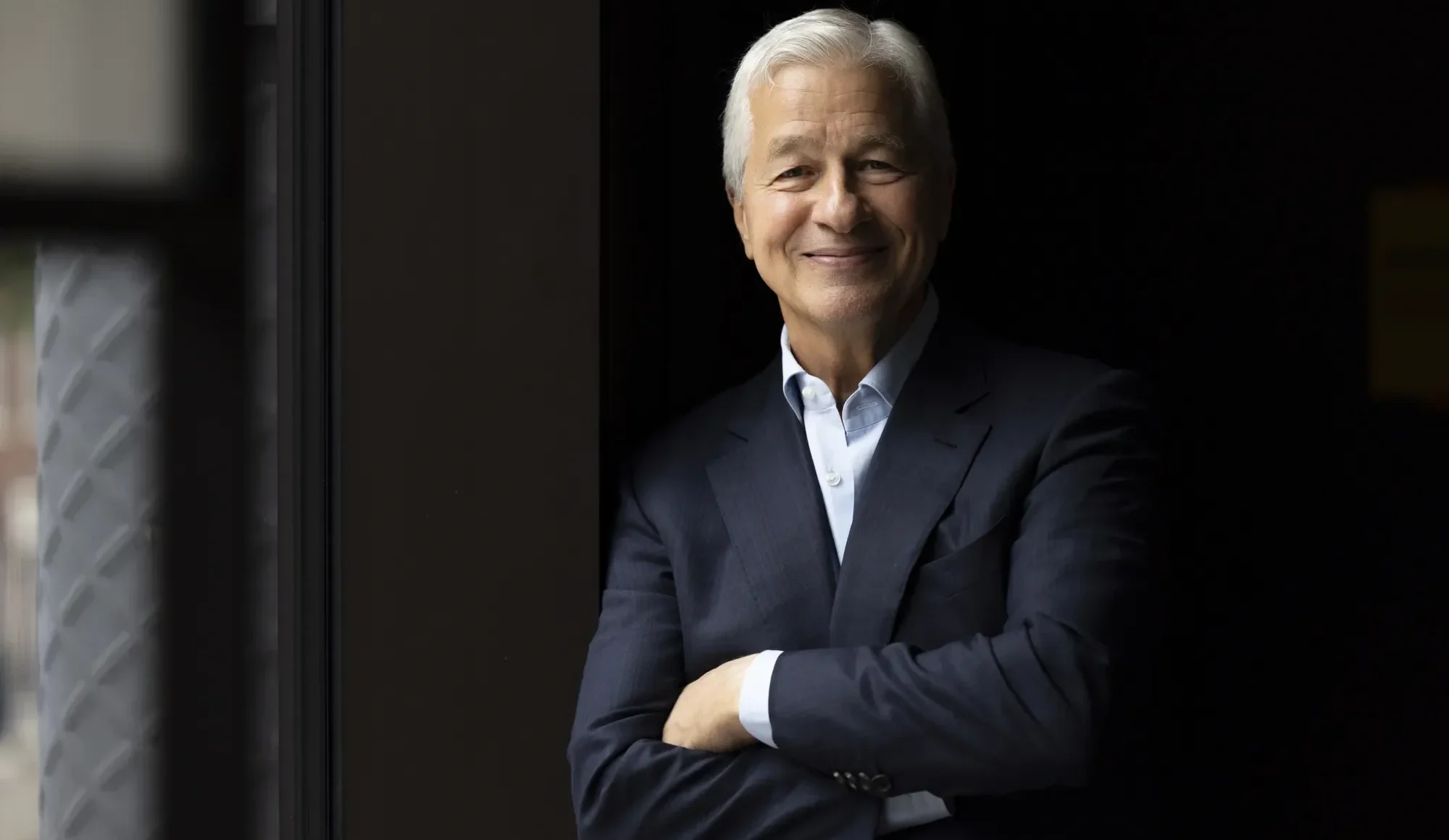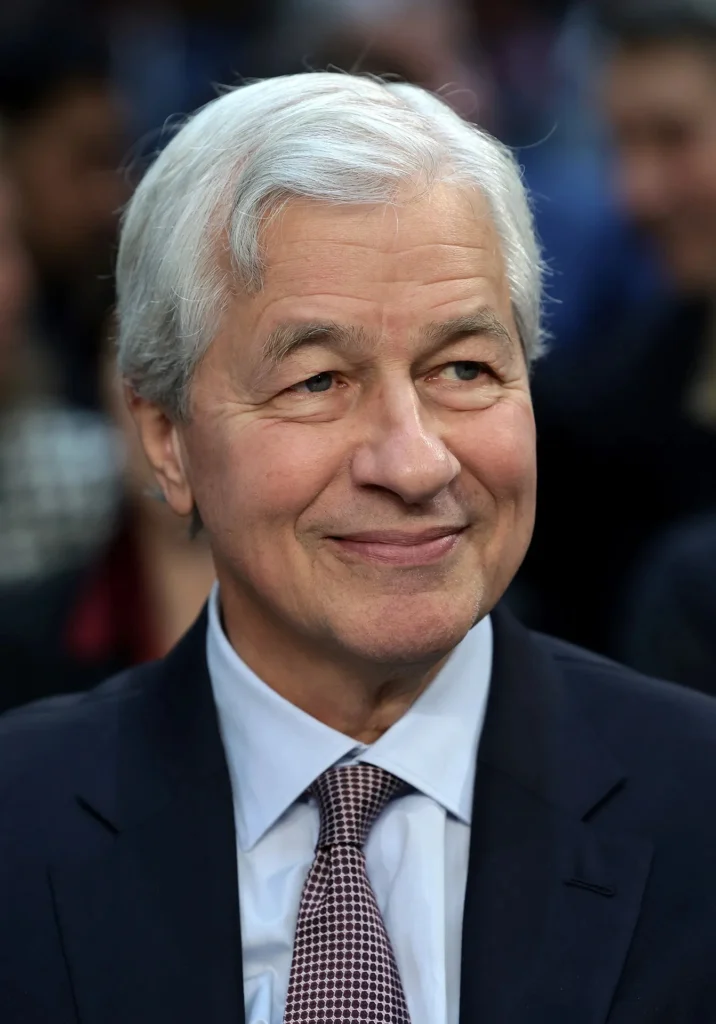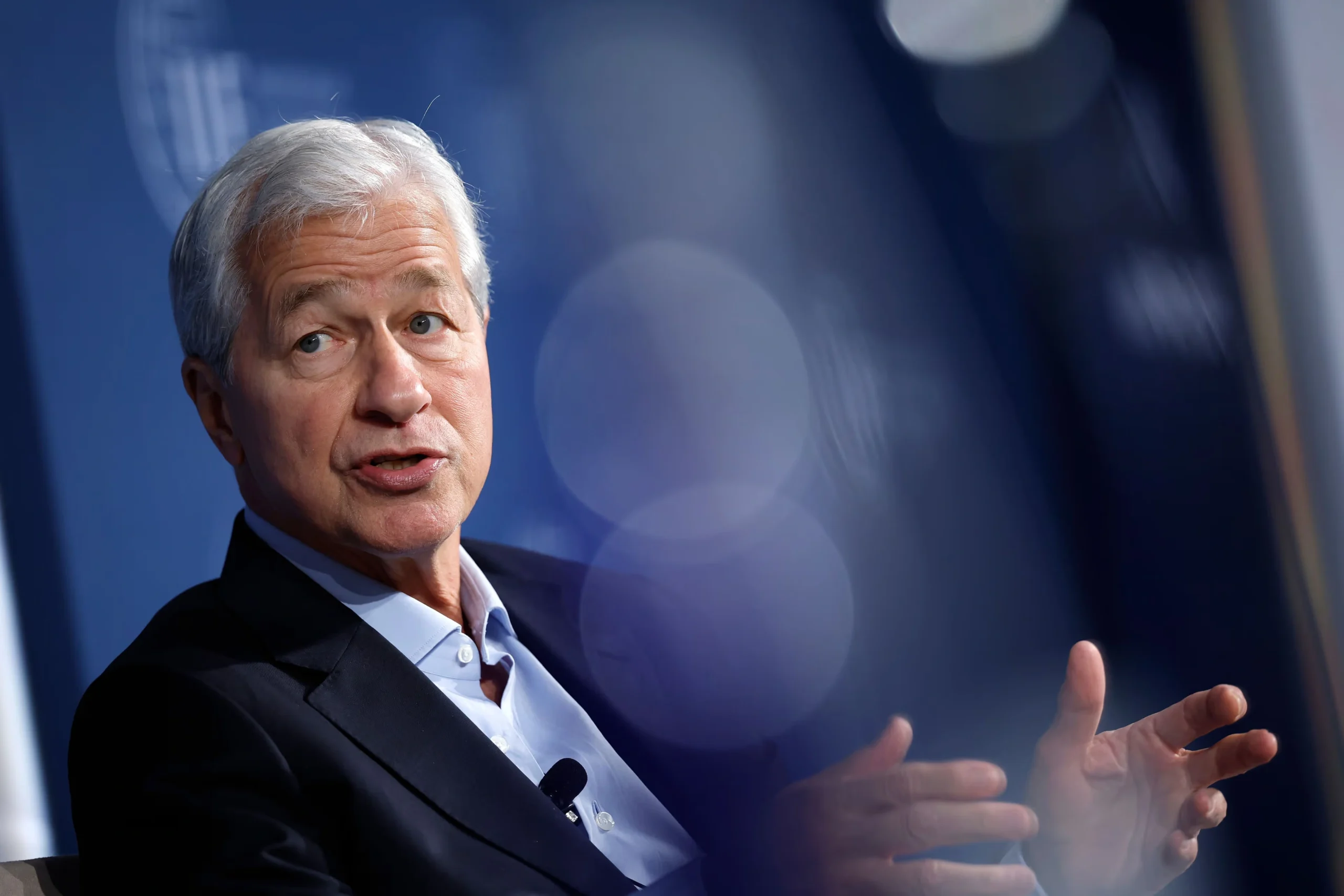Jamie Dimon
How JPMorgan’s CEO Shapes Markets, Policy, and Corporate Culture
By Peter Davis

Jamie Dimon doesn’t just run the largest bank in the United States, he operates at the pressure point where finance, policy, and workplace culture meet. As chairman and CEO of JPMorgan Chase, Dimon has spent nearly two decades building a firm whose balance sheet can calm a panic, whose quarterly calls can move yields, and whose annual shareholder letter reads like a playbook for managing risk in an era of rolling shocks. In 2025, his influence is as palpable on the trading floor as it is in the halls of Washington and the city blocks around Manhattan’s new skyline.
The Market Whisperer who plans for the worst, and often calls it
Dimon’s market sway is unusual even by Wall Street standards. His public comments increasingly function as sentiment checks for CEOs, policymakers, and investors trying to locate the next turn in the cycle. This summer, Dimon warned, again, that markets might be underestimating the possibility of higher-for-longer interest rates, even as consumer strength looked “okay.” He paired that with a now-familiar catalog of macro risks, trade uncertainty, geopolitics, federal deficits, and inflated asset prices. The message wasn’t doomsday; it was discipline, structure your plans as though adverse scenarios are more probable than the consensus admits.
That theme carried through the bank’s midyear messaging. JPMorgan remains open to acquisitions when the numbers work, but it is building capital and modeling tougher credit outcomes. The bank has flashed caution on near-term dealmaking fees, remains vigilant on consumer credit, especially cards, and is wedged between soft-landing hopes and a mild-recession base case. Dimon’s team has even floated the possibility of higher charge-offs in 2026, a pragmatic counterweight to the market’s periodic exuberance.
The Shareholder letter as an operating manual
Dimon’s 2025 letter to shareholders reads like a field guide for managing a complex, regulated, systemically important institution through uncertainty. He toggles between first principles, fighting complacency and bureaucracy, and live policy debates he believes could shape growth, liquidity, and credit formation for a decade. It’s a document designed to be used, not admired, folding geopolitical risk, industrial policy, and banking fundamentals into concrete actions across client franchises and technology platforms.
The posture is consistent with the way he communicates risk to employees and peers, don’t make heroic forecasts, make resilient plans. In recent remarks, he warned there’s a “real chance” key U.S. economic numbers soften and that businesses should prepare less for a single macro narrative and more for wide error bands.
Policy, politics, and the weight of the megabank
Dimon’s policy voice is unusually loud for a sitting bank CEO, which is precisely why lawmakers routinely call him in. Dating back to the post-crisis reform era and through the current Basel endgame debates, he’s argued for “good regulations, and good regulators,” while warning that layer-upon-layer rulemaking can impair credit availability and market plumbing. He makes that case in testimony and private meetings alike, offering a banker’s version of industrial strategy, capital must be able to move with speed and clarity.
He’s not shy about fighting proposals he sees as counterproductive. In a 2024 broadside, he vowed to “fight back” against regulations he said would undermine competitiveness and the financial system’s resilience, a line that played well with some investors and set up high-stakes negotiations with regulators. Dimon’s policy footprint is not partisan; it’s muscular pragmatism. But the result is the same: when Dimon speaks, staffers at Treasury, the Fed, and Senate Banking take notes.

Scale, speed, and the franchise power of JPMorgan
At the center of Dimon’s leadership is a uniquely diversified franchise, with retail, commercial, payments, investment banking, markets, and asset and wealth management all throwing off information and earnings. The bank’s 2025 targets, net interest income still near record levels and a ROTCE goal in the high-teens, signal that management believes the engine can grind through adverse scenarios. Strategically, Dimon keeps building moats with technology, including AI deployments for fraud prevention and service, and with client breadth across sectors and geographies.
The 2023 acquisition of First Republic, engineered in a weekend to stabilize confidence, is a case study in how Dimon wields scale. He framed it as modestly accretive for shareholders, complementary to wealth ambitions, and crucially, structured to minimize costs to the Deposit Insurance Fund. It also aligned with his broader crisis doctrine, act decisively when the system wobbles, then integrate quietly and keep moving.
Succession without surrender
For years, markets have asked, When does Dimon hand off the keys? The answer in 2025 is, not yet, but the runway is visible. JPMorgan’s board has identified and cultivated multiple internal leaders, and Dimon has publicly reiterated that the timing is “up to the board” and still “several years away.” Leading candidates include heads of the consumer bank and asset management, reflecting how Dimon has institutionalized decision-making beyond a single center of gravity. The process is a management signal in its own right, continuity and optionality are features, not bugs.
Culture as a Competitive advantage, and a Lightning rod
Dimon’s cultural imprint might be as influential as his balance sheet. Consider the new 60-story headquarters at 270 Park Avenue, a $3 billion, amenity-rich tower opening in 2025 that announces a high-conviction bet on New York and on in-person work. With capacity for roughly ten thousand employees, biometric entry systems, a sprawling food hall, and wellness facilities, the building is both a recruiting argument and a cultural statement. JPMorgan builds for the long run, and it expects teams to collaborate shoulder-to-shoulder.
If the skyscraper is the symbol, the policy is the substance. Dimon is unabashed about his return-to-office stance, five days for many roles, with exceptions sparingly granted, and he’s pressed managers to reinforce apprenticeship and speed through proximity. That approach has its critics, inside and outside the bank, but it is consistent with Dimon’s operating worldview, complex, fast-moving businesses function best when teams can iterate in real time.
There’s a tougher edge, too. Dimon has admonished job-hopping among juniors and reminded employees that commitment and cadence matter at a firm operating at global scale. The underlying message to recruits and rivals alike, JPMorgan’s culture is demanding because its mandate is broad.
Community Investment and the “License to Operate”
Dimon has increasingly framed JPMorgan’s community initiatives as part of its core business model rather than just corporate responsibility. The firm’s AdvancingCities initiative, which began as a $500 million commitment, blended lending, philanthropy, and expertise to catalyze inclusive growth and has since evolved into multi-city investments and competitions designed to seed scalable solutions. Dimon’s argument is as old-school as it is topical, healthy households and neighborhoods produce better customers and lower systemic risk.
The “second-chance” agenda, hiring people with criminal records and supporting their reentry, shows the same anatomy, identify a structural market failure, work with policymakers and nonprofits, and apply the bank’s operational muscle. Dimon has said the policy helps reduce recidivism and expands the talent pool, in practice it also signals to employees, and critics, that opportunity is an organizing principle, not just a talking point.
Technology as risk control, growth engine, and culture shaper
Under Dimon, JPMorgan spends like a tech company where it counts. The new HQ showcases that mindset, biometric access, circadian lighting, and a proprietary workplace app supporting operations and collaboration. The bank’s AI efforts skew to the unglamorous but critical, fraud detection, customer service routing, risk modeling, and developer productivity. Dimon’s view is that technology is not a separate business line, it’s the bloodstream of every one of them.
That integration is strategic in the markets, too. In payments, the bank has used data and infrastructure to deepen merchant relationships, in trading, it has layered analytics into execution and risk, and in consumer finance, it is re-wiring underwriting and service workflows to cut friction and fraud simultaneously. The lesson for rivals is simple, in a scale business, compounding tech advantages are very hard to catch.
The Cultural Impact of a Headquarters, and a bet on cities
The new 270 Park tower is more than a building; it’s a statement about urban vitality. It has been framed as a bellwether for the city’s post-pandemic office recovery, and it arrives just as New York becomes the first U.S. city to exceed pre-2019 office foot traffic. Dimon is wagering that global talent still wants to congregate where ambition and amenities overlap, and that the office can be a competitive differentiator, not a cost center.
The Financial Times cast the building as “Fortress JPMorgan,” a physical manifestation of the bank’s outsized market cap and earnings power, equipped with everything from drought-resilient infrastructure to AI-managed lighting. Inside, not every employee gets a desk, and some amenities draw eye-rolls for their à-la-carte pricing, but the message to clients and recruits is unmistakable; this is the cathedral of a firm that expects to matter for the next 50 years.

What makes Dimon different
Dimon’s distinctiveness isn’t just that he’s usually early in spotting risks, it’s that he operationalizes those warnings. He doesn’t forecast stagflation for the headline, he budgets reserves, models capital, and keeps dry powder for when the spread between fear and value opens up. He doesn’t lambaste regulation for sport, he shows up, testifies, and offers a bank operator’s blueprint for liquidity and credit stability. And he doesn’t preach culture in the abstract, he builds a tower, sets a policy, and gives his managers a frame.
His tone with fellow CEOs is sharp by design. At a June forum, he told leaders worried about economic volatility, “That’s life.” The subtext, resilient companies don’t cancel apprenticeships or defund training when the macro turns, they trim and tune but keep investing through the cycle. The advice dovetails with how JPMorgan has kept hiring, training, and technology spend on a steady glide path even as it flexed expenses and risk appetite.
The Dimon Doctrine, in four moves
- Build optionality at scale. The franchise is diversified across businesses and geographies, the balance sheet is fortified, the tech stack is continuously modernized, and inorganic moves, like First Republic, are executed when they strengthen the core.
- Treat policy as a first-order business variable. Dimon engages directly, arguing for rules that preserve liquidity and credit while warning against cumulative regulatory drag. He brings data and operating context to policymakers who rarely get either in real time.
- Make culture visible. From unapologetic return-to-office expectations to an amenity-rich headquarters, JPMorgan’s culture is built into the physical and digital environment. It recruits for ambition, trains for craft, and signals standards constantly.
- Invest in the civic fabric. AdvancingCities and second-chance hiring push capital and opportunity into places where market frictions are highest, binding the bank’s profitability story to a broader growth story.
The Road Ahead
Dimon’s eventual handoff is one of the market’s great open questions, but the architecture he’s built, strategic, cultural, and physical, reduces key-man risk. Succession candidates have been seasoned in line roles, decision rights are ever more institutionalized, and the bank’s strategy is legible enough that shareholders can measure execution without reading tea leaves. Dimon himself says departure is “several years away,” and his board is clearly engineering continuity. For a bank whose weekly earnings sometimes top $1 billion and whose HQ now dominates Park Avenue, continuity may be the most powerful signal of all.
Dimon’s leadership can be polarizing, especially on return-to-office and regulatory fights, but even critics concede that his clarity has value in a noisy era. He represents an older model of corporate statesman, unglamorous, blunt, obsessed with plumbing. In 2025, that may be precisely what markets, policymakers, and employees need.


